LEAVING
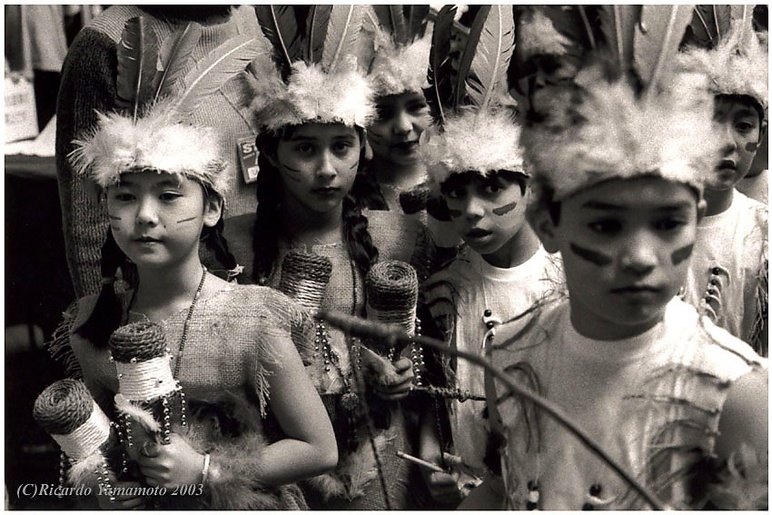
|
||
| Licensing | ||
At the beginning of the 20th Century, many families from Japan arrived in Brazil with the dream of prosperity in a far away land. The pursue of these dreams gave birth to the largest Japanese and Nikkei community in the world. Later on, in the ´90s, the world saw a new movement of population between these two countries, but this time it was the Brazilian-born nikkei who was taking a jouney "back" to Japan, holding essentially the same dreams of prosperity in a "strange land". I am one of the Brazilian-nikkeis who migrated to Japan, the so-called Brazilian dekasegui. For me, we are implicitly part of a much larger movement. We live the beginning of a new era in our history. An era of reflection, characterized by unpreceded technological advance and global scale migration - A real re-organization of the human family. In Brazil, 2008 is the year we celebrate the "Centenary of Japanese imigration to Brazil". Or, in Japanese authority´s terms, the "Centenary of relations between Japan and Brazil". To help preserving the history of the individuals who are part of these movements of population, I present here an album of images from LEAVING, a photographic documentary about the Brazilian Nikkei community in Japan. This album aims to present a new aspect of our time, approaching people of different status and conditions to show, with no statements or appologies, a fundamental equality.
Slides in this album |
|
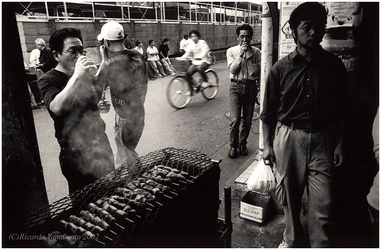
|
Barbecue and Karaoke in a Brazilian goods shop. Hamamatsu, Japan 2002There is around 312,000 Brazilian-nikkeis living in Japan today. Although the base of their income comes from their work in factories of automobiles, electronics, food and many others, the community is large enough to allow many to start their own business, offering products and services specifically for the Brazilian-nikkei consumer. …
Barbecue and Karaoke in a Brazilian goods shop. |

|
Public apartments. Hamamatsu, Japan 2005.When arriving in Japan, most families find cheap rents in old public apartments. Those who intend to stay longer or settle, however, move to newer and bigger apartments. It has also become very commom to see Brazilians making thirty-year long loans in order to buy a house in Japan.
Public apartments. Hamamatsu, Japan 2005. |
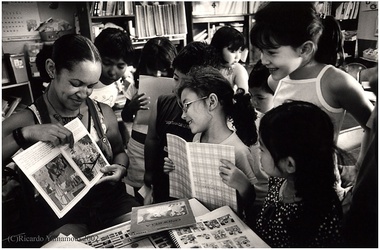
|
Brazilian elementary school. Hamamatsu, Japan 2002Children who´s families intend to return to Brazil usually are studying at Brazilian schools. Choosing between Japanese and Brazilian education systems is one of the hardest tasks that parents face in Japan. Brazilian schools are not public (fees are between 400 and 500 USD/month) and have usually poor structure (very …
Brazilian elementary school. Hamamatsu, Japan 2002 |
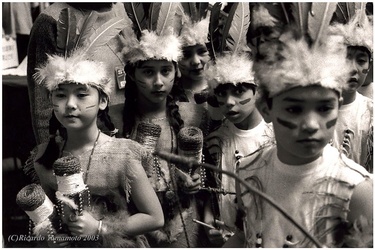
|
Cultural festival. Hamamatsu, Japan 2003.Industrial cities like Hamamatsu, Toyota, Oizumi, Yokkaichi and others have concentrations of Brazilian-nikkeis. In this cities, immigrantion associations and international centers hold many cultural events for Brazilians throughout the year to help preserve and promote their culture and identity. Here, a group of children from a Brazilian school wait for …
Cultural festival. Hamamatsu, Japan 2003. |
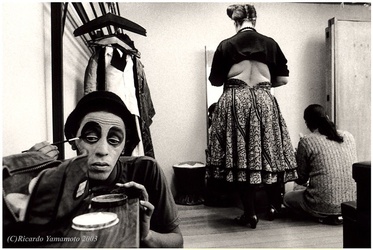
|
Backstage. Hamamatsu, Japan 2003Actors and musicians get ready to perform a musical piece for children. Many events promoted for the community count on the talent of artists brought directly from Brazil. Among them are musicians, actors, DJs, performers, tv celebrities and so on. There is also a well organized Brazilian midia that covers, …
Backstage. Hamamatsu, Japan 2003 |
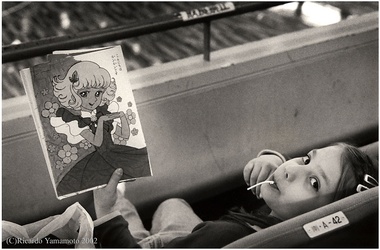
|
Drawing. Hamamatsu, Japan 2002Brazilian child coloring a Japanese drawing.
Drawing. Hamamatsu, Japan 2002 |

|
Modeling school. Hamamatsu, 2004.Parents usuallly encourage their children to take modeling courses. They believe modeling can be a way to start a dream-like career at a very young age, thus enabling the child or teenager to help financing their own future education and dreams.
Modeling school. Hamamatsu, 2004. |
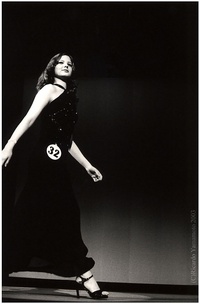
|
Miss Nikkei. Komaki, Japan 2003.Becoming a model is also one of the most popularized ways that many teenagers have to avoid going to the factories. Thus, with a stablished demand for half-Japanese in the Japanese fashion market, many modeling agencies seek pretty faces in the community, moving event promoters to set up a number …
Miss Nikkei. Komaki, Japan 2003. |
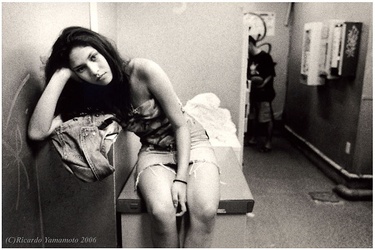
|
Brazilian Model. Tokyo, Japan 2006Half-Japanese are those who look like Japanese but also display western features. The preference modeling agencies in Tokyo have for Brazilian-nikkei models to fulfill this market is also due to the fact that, although they are foreigners, Brazilian-nikkeis are already used to living in Japan and can count on their …
Brazilian Model. Tokyo, Japan 2006 |
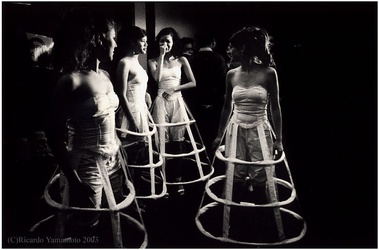
|
Staff at disco club. Toyohashi, Japan 2003Imigrants are usually young. In Japan, areas where Brazilian-nikkeis concentrate have at least one disco club. Besides being a place to relax, dance and meet their counterparts, disco clubs also represent an opportunity for making business, thus creating weekend jobs for entertainers, DJs, bartenders and designers.
Staff at disco club. Toyohashi, Japan 2003 |
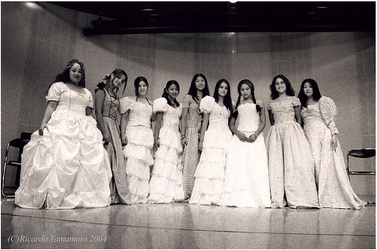
|
The theatre. Hamamatsu, 2004.Students of an acting course for Brazilians rehearse with their costumes on. For those who take the activity more seriously, the goal is to go back to Brazil and apply for a job as an actor or actress.
On stage. Hamamatsu, 2004. |
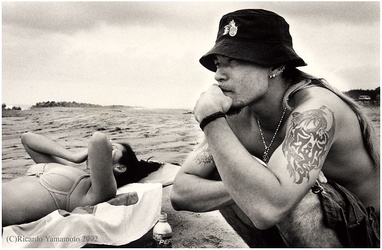
|
"Komamba" beach. Iwata, Japan 2002.A very known "Brazilian point" near the city of Hamamatsu, where nikkeis gather for sunbathing, surfing and barbecue.
"Komamba" beach. Iwata, Japan 2002. |
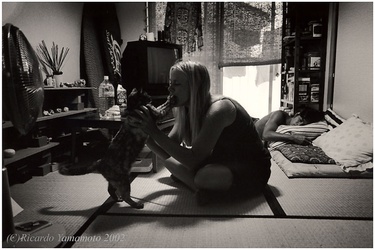
|
Suzan, Alexandre and Bell. Hamamatsu, Japan 2002.Living in a foreign country is also an opportunity to meet foreign people. Brazilian-nikkei Alexandre met Canadian English teacher Suzan in Japan. One month after the photo was taken, they left to Canada.
Suzan, Alexandre and Bell. Hamamatsu, Japan 2002. |
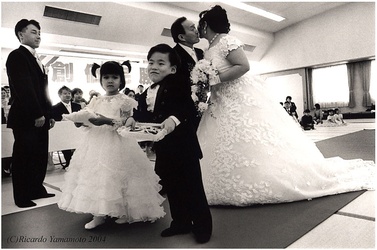
|
Luciana´s wedding. Kariya, japan 2004The first Brazilian-nikkeis came to Japan mostly alone or along with one or two relatives. After a while many saw their parents, brothers and sisters eventually making the trip to join them. And as years go by, the family members get married and start their own families in Japan.
Luciana´s wedding. Kariya, Japan 2004 |
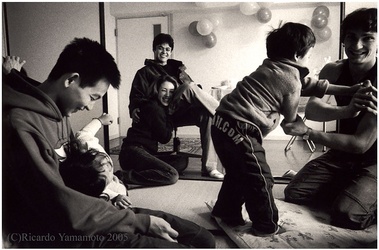
|
Sunday. Toyota, Japan 2005.Sundays are usually when the families gather to spend the day.
Family gather. Toyota, Japan 2005. |

|
"I believe I can fly". Hamamatsu, 2005.Thank you.
Batman. Hamamatsu, Japan 2005 |
 Ricardo_Yamamoto
Ricardo_Yamamoto
 LEAVING
LEAVING
 Journal feed
Journal feed
